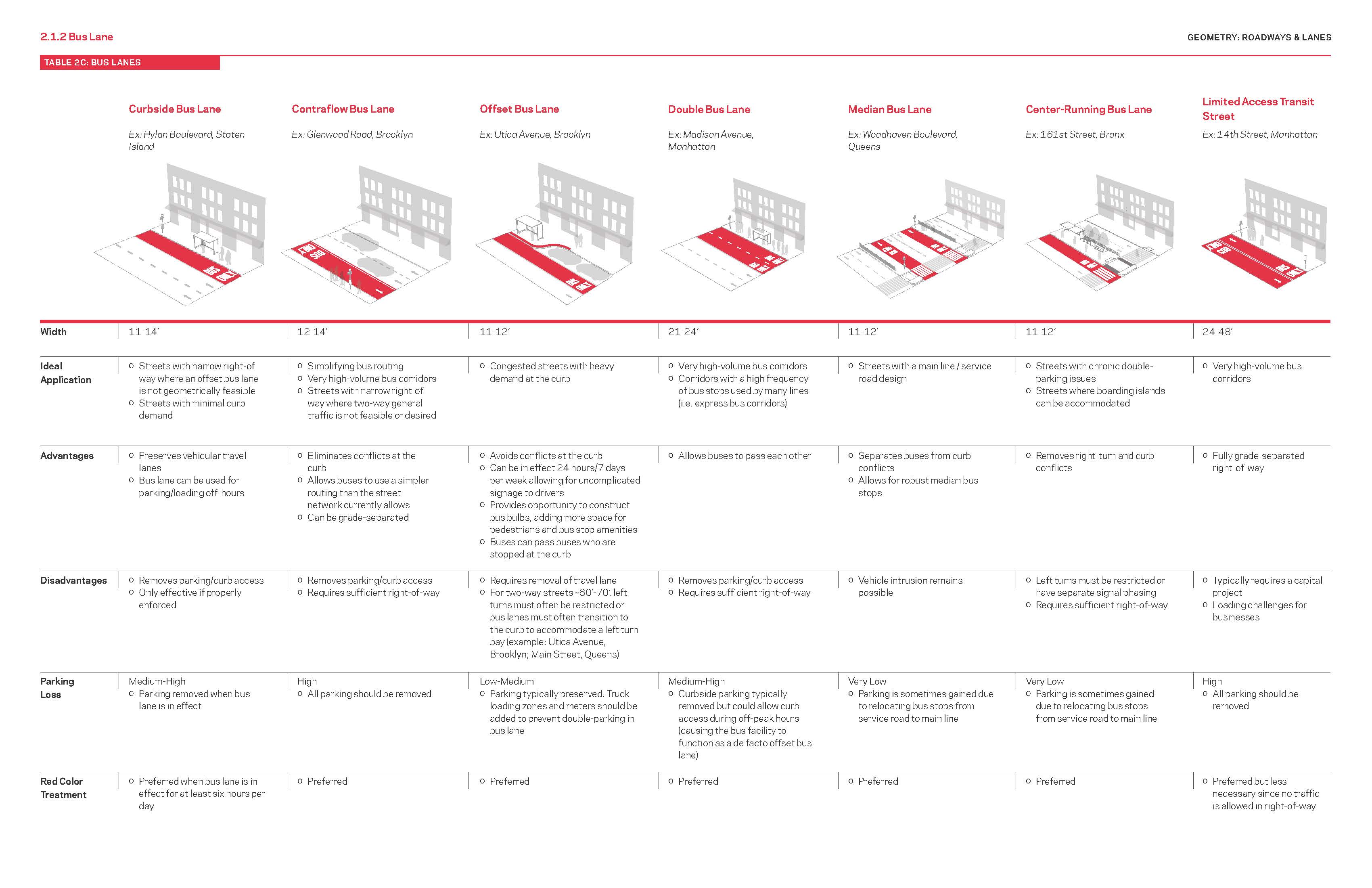Usage: Limited
A dedicated on-street facility for buses. Bus lanes are delineated within the roadway with markings. Bus lanes can either be designed to run along the median of the street or along the outside (curbside or offset from a parking lane) of the street. Select Bus Service (SBS) is a high-quality bus service planned by DOT and operated by MTA NYCT that uses several techniques to improve the speed and reliability of bus service.
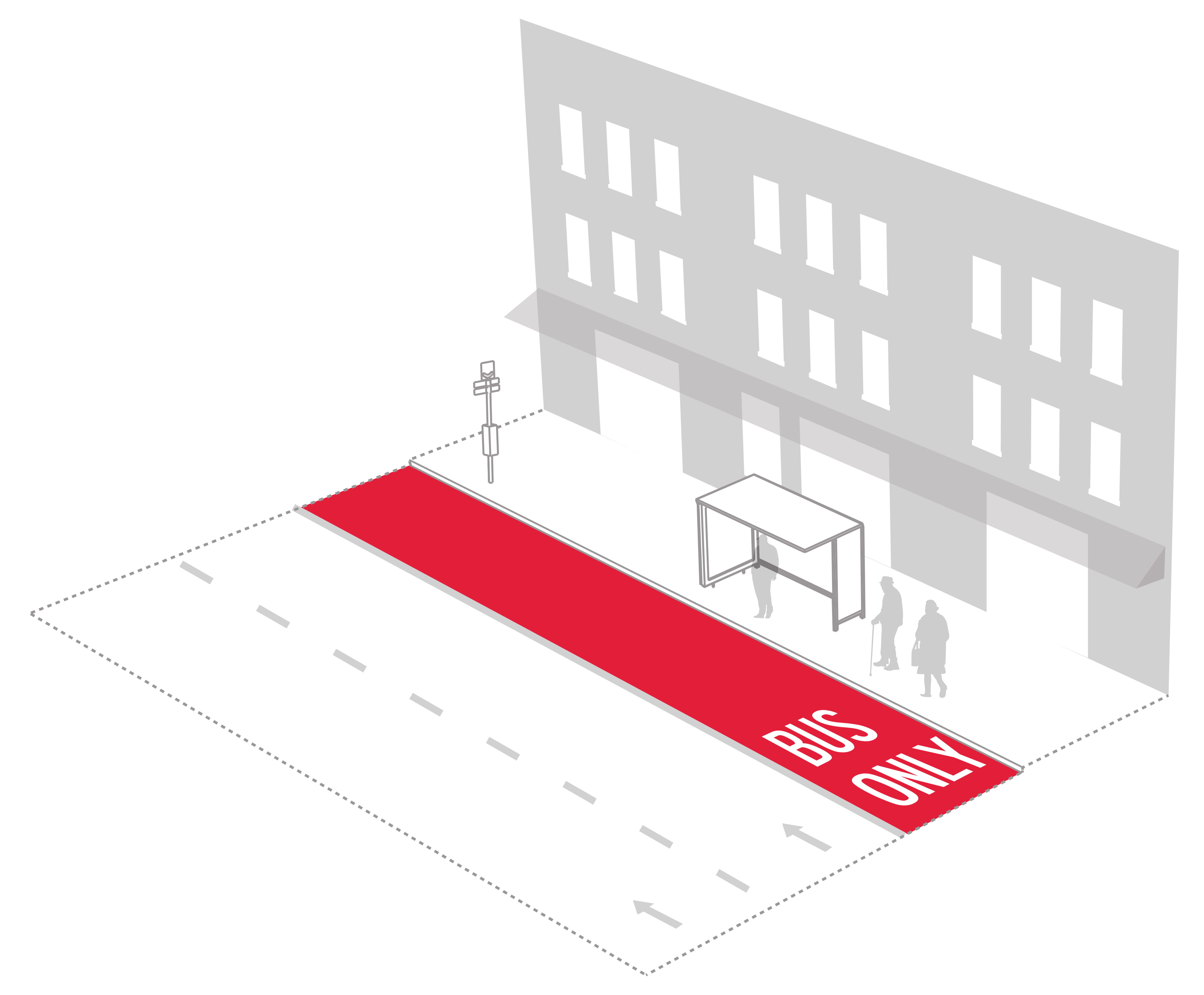
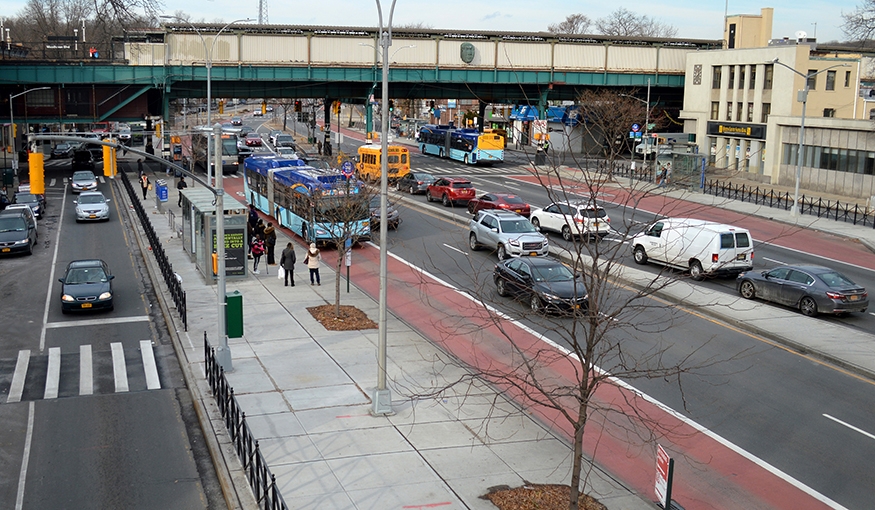
Woodhaven Boulevard, Queens
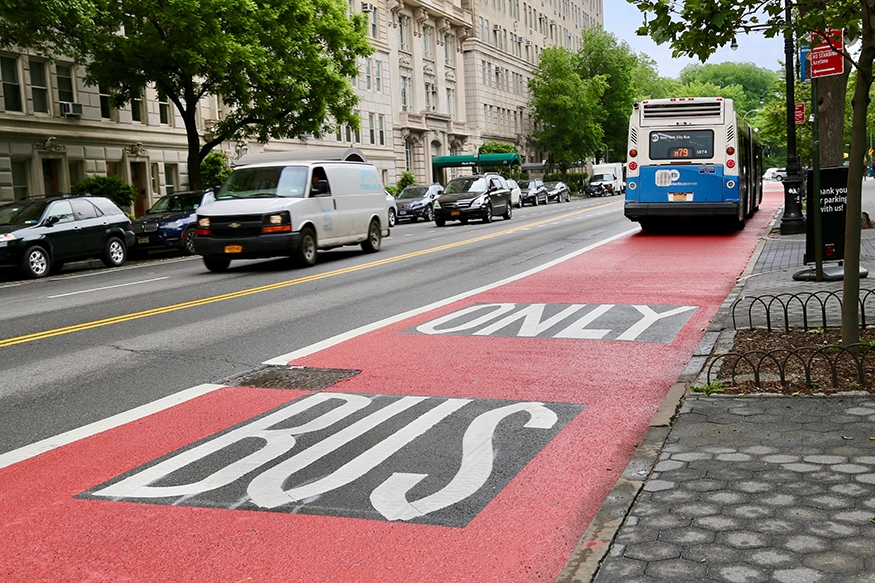
W 81st Street, Manhattan
Benefits
- Improves bus speeds and reliability by separating buses from potential congestion in mixed traffic and by reducing or eliminating their need to merge in and out of traffic at bus stops
- SBS buses operate 15-30% more efficiently than buses operating on other routes, thereby reducing greenhouse gas emissions and other harmful air pollutants
- Provides means for emergency vehicles to bypass traffic
Considerations
- If curbside, may result in restriction or relocation of curbside parking/loading
Application
- Consider on all streets with high bus volumes or existing or planned SBS routes and adequate space, regardless of congestion
- Avoid on streets where the roadway geometry prevents the safe operation of a bus lane in conjunction with other necessary uses of the roadway
Design
- Bus lanes can be located immediately adjacent to the curb (curbside bus lane), adjacent to the right hand parking lane (offset bus lane), or in the middle of a road with boarding island stations (median bus lane or center-running bus lane). Note that buses can only load/unload on the right-handside
- All bus lane types can be one or two lanes per direction based on bus volume, operating characteristics, and road width; one lane per direction is more common
- Use an offset bus lane where possible, particularly when parking needs to be maintained; stops can be made at the curb or at Bus Bulbs
- Use a curbside bus lane when right-of-way may be constrained and where parking impacts can be managed
- For curbside bus lanes, curbside deliveries can be accommodated with truck loading windows or reserved truck loading around the corner
- A median bus lane should be considered on two-way streets when sufficient right-of-way is available to accommodate the bus facility and the associated boarding islands, and the operation of the busway (including pedestrian movements) can be safely managed
- For median bus lane designs, boarding platforms must be included for bus passengers at bus stops; these islands can also function as Pedestrian Safety Islands
- For median bus lane designs, left turns across the bus facility should either be prohibited or provided a protected signal phase
- All bus lane designs can accommodate one or two directions of bus traffic. Special care must be paid to the signalization and design of intersections so as to not introduce turning conflicts
Bus Lane table [PDF]
See the Bus Lane table [PDF] for a listing of typical bus lane and busway designs and their respective widths, ideal applications, and advantages and disadvantages
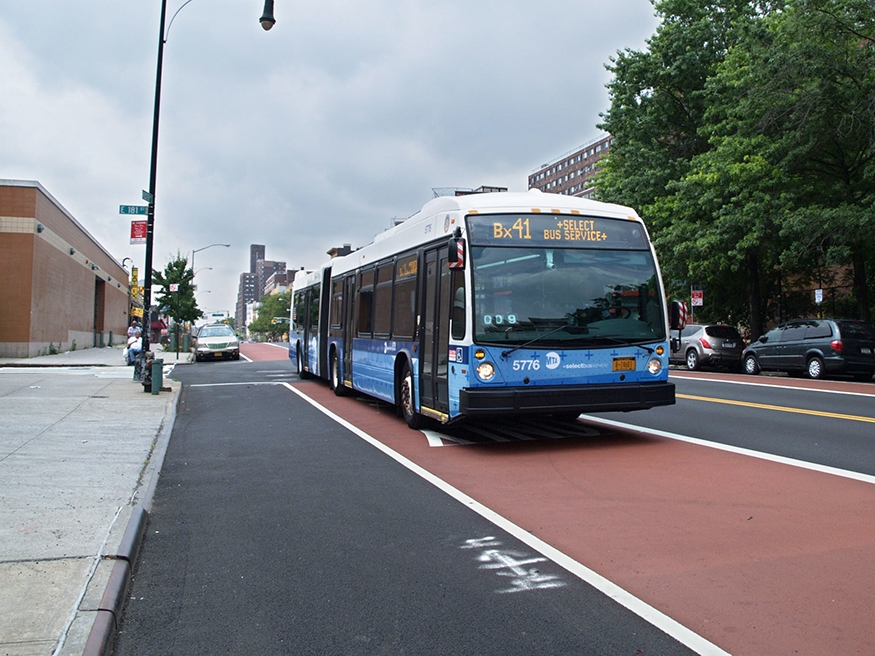
Webster Avenue, Bronx



